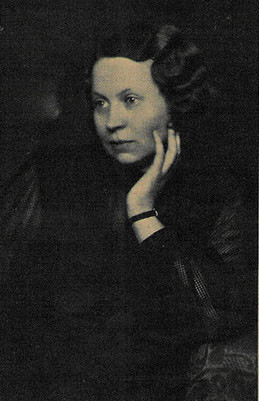Concerto for Piano and Orchestra
In memory of little friend Lailiņa (niece Laila Reinvalde)
I Lento pesante - Allegro sostenuto sempre ben marcato
II In memoriam. Grave - Quasi andantino
III Maestoso - Allegretto scherzando
Instrumentation – 1955 pno. – 2 fl. (II = picc.) 2 ob. 2 cl. 2 bsn. – 4 hn. 2 tpt. (C) 3 tbn. – timp. perc.: cym. – strings
Album "Lūcija Garūta. Music for Piano" HERE
"Piano Concerto (1951, orchestrated in 1955; dedicated to the memory of Lūcija Garūta’s niece, Lailiņa) Tragedy struck Garūta’s life in 1950, when her niece, Laila Reinvalde (Lailiņa, or Little Laila), with whom she was very close, passed away at the age of twelve from a heart ailment. On March 4, 1950, Garūta received a letter of condolence from composer Alfrēds Kalniņš regarding the death of her sister’s daughter. He also encouraged Garūta to compose a piece of music in Lailiņa’s memory. Thus, in 1950 she wrote the second part of the Piano Concerto, titled In memoriam. Perhaps significantly, Garūta wrote only one other piece of music in this same year, the song Little Hops. At the time when she wrote the Piano Concerto, Garūta was drawing strength and consolation from folk songs more than ever before. In 1951 she wrote the Variations on the Folk Song Ploughers, Harrowers and Seven Folk Songs for Piano, both also dedicated to the memory of Lailiņa. Her music was now characterised by depth and simplicity; however, echoes of the enthusiastic, exalted expression of her early piano works can be still heard at moments of dramatic climax. When the entire Piano Concerto was finished, it first had to be presented to the board of the Composers’ Union of Soviet Latvia for evaluation. At first, the board reacted unfavourably to the concerto, accusing it of cultivating subjective, tragic feelings that are of no use to anybody, and therefore listeners do not need such a composition. However, Garūta ignored this criticism and continued working on and developing the orchestration. When the Composers’ Union assessed the Piano Concerto a second time, its conclusion, delivered on September 18, 1955, stated that in fact this work can be considered one of the most successful piano concertos written in Soviet Latvia. The Piano Concerto was premiered on the radio a mere eleven days later and lauded by listeners. It was performed by pianist Hermanis Brauns and the Radio Committee Symphony Orchestra, conducted by Arvīds Jansons. The first movement of the concerto, Lento, pesante. Allegro sostenuto, is full of drama and despair but also energy in the face of struggle. The second subject brings in lighter reflection and calls to mind memories of the joyful and gentle Lailiņa. The sorrowful second movement, In memoriam. Grave, is a series of double variations on two Latvian funeral folk songs. The third movement of the concerto, Maestoso. Allegretto, scherzando is written in rondo sonata form. Even though the melodic material and tragedy of the first movement is echoed here in the soloist’s cadenza, the concerto’s conclusion confirms a will to live and attests to the power of memory. Its playful and bright character is derived from musical material written years before, at a lighter period in Garūta’s life, when little Lailiņa brought her a bouquet of the first spring flowers." - Ināra Jakubone (© LMIC/SKANi 056, 2017).

